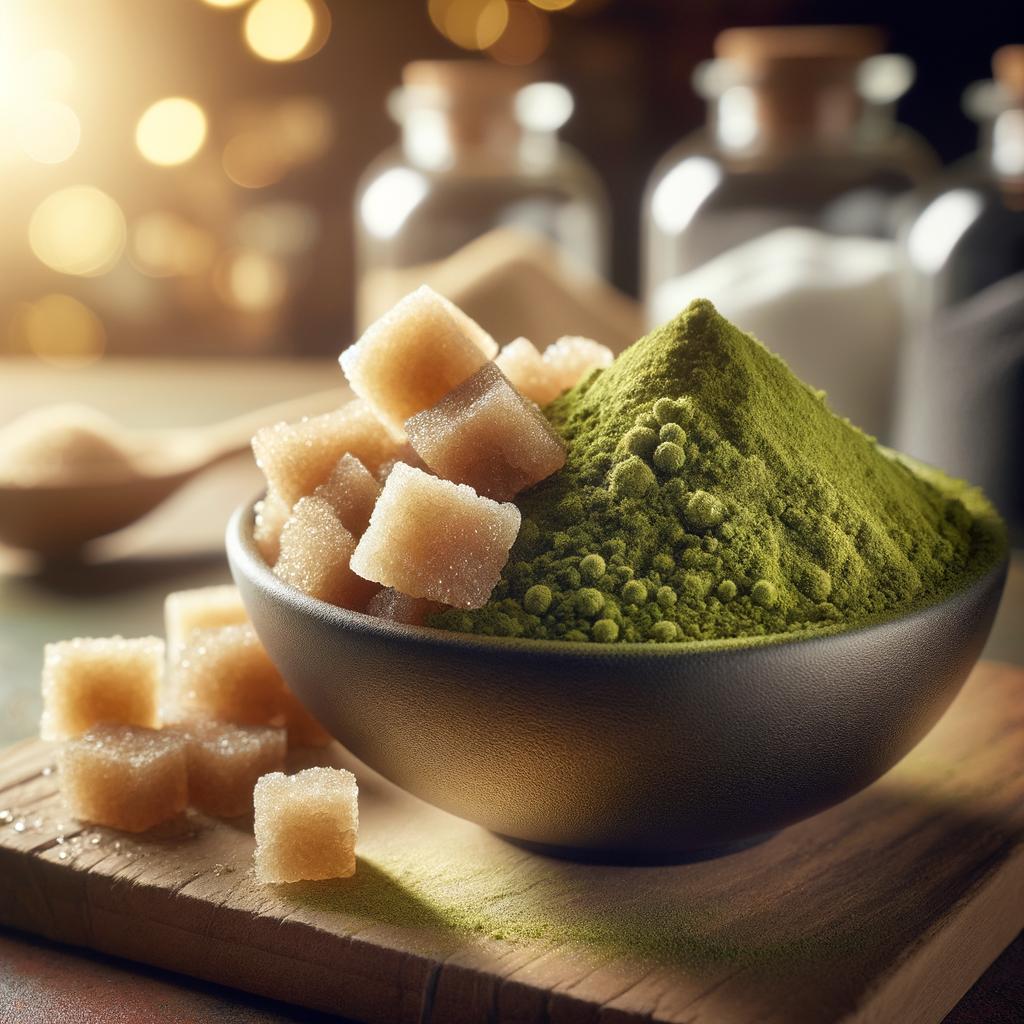Brown Sugar or Matcha Powder

Ingredient: Brown Sugar
Description Brown sugar, a sweet symphony of flavor, is an enchanting ingredient that can instantly enhance the taste of your culinary creations. Its appearance is captivating, with a rich, deep color that ranges from light amber to dark molasses. The texture of brown sugar is unique, a soft and moist consistency that forms delicate clumps. Its flavor profile is a romantic dance of sweet and caramel notes, with a subtle hint of vanilla. What sets brown sugar apart from its white counterpart is the presence of molasses, which gives it its distinctive color, moisture, and flavor.
Primary Uses Brown sugar is a versatile ingredient that is commonly used in a variety of cooking and baking recipes. It is a key component in dishes that span from the comforting warmth of apple pie to the tangy delight of barbecue sauces. In baking, it adds moisture and depth to cookies, cakes, and pastries. Beyond the culinary world, brown sugar plays a role in beauty treatments, acting as a natural exfoliant in homemade scrubs.
History The history of brown sugar is woven into the fabric of many cultures. Originating in ancient India, the process of making brown sugar traveled along trade routes to the Middle East, Africa, and eventually Europe. Its use and popularity have evolved over time, from being a luxury product in the Middle Ages to becoming a staple in modern kitchens. A charming piece of folklore suggests that brown sugar was considered a symbol of love and fertility in some cultures.
Nutritional Information While brown sugar is a source of energy, providing carbohydrates, it also offers trace amounts of minerals such as calcium, potassium, and iron due to the molasses content. However, it's important to remember that like all sugars, it should be consumed in moderation. Compared to white sugar, brown sugar has slightly more nutritional value due to the presence of molasses, but the difference is quite small.
Ingredient: Matcha Powder
Description Matcha powder is a vibrant, finely ground powder made from specially grown and processed green tea leaves. Its striking emerald green color is a feast for the eyes, while its silky texture is a tactile delight. The flavor profile of matcha is a complex tapestry of taste, blending umami, sweetness, and a hint of bitterness. Its unique characteristic lies in its preparation, where the whole leaf is consumed, offering a more potent flavor and nutritional profile compared to other teas.
Primary Uses Matcha powder is most commonly used in traditional Japanese tea ceremonies, where it is whisked with hot water to create a frothy, rich brew. It is also a key component in a wide range of dishes, from the delicate sweetness of matcha-infused desserts and ice creams to the savory complexity of matcha noodles and broths. Beyond its culinary uses, matcha is also used in skincare products due to its antioxidant properties.
History The history of matcha is steeped in the ancient traditions of Japan. It was brought to Japan by Buddhist monks in the 12th century and quickly became an integral part of the traditional tea ceremony, symbolizing mindfulness and meditation. Over time, matcha has gained worldwide popularity, evolving from a ceremonial drink to a trendy ingredient in cafes and kitchens around the globe.
Nutritional Information Matcha powder is a nutritional powerhouse, packed with antioxidants, particularly catechins, which are believed to have cancer-fighting properties. It also provides vitamins A, C, and E, along with fiber. Regular consumption of matcha is associated with several health benefits, including improved heart health, weight loss, and increased focus and concentration. Compared to traditional green tea, matcha offers a more concentrated source of nutrients due to the consumption of the whole leaf.

